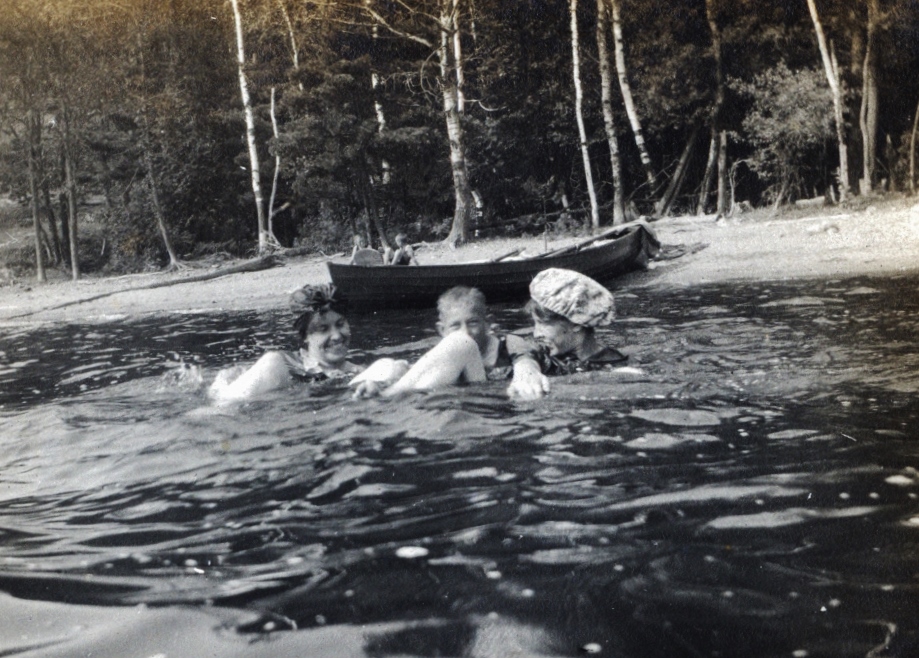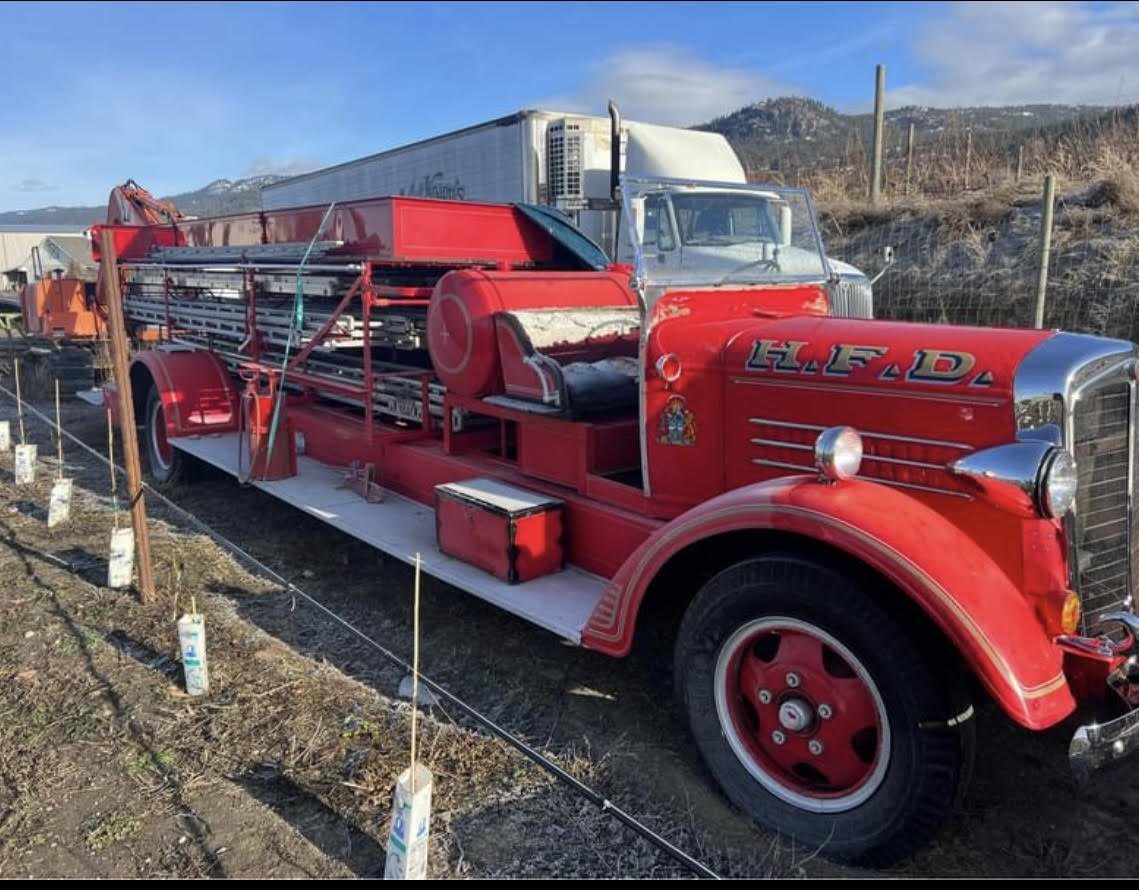Carscallen-Judge Parker-Jeanette Campbell cottage Marble Point Rd. Crowe Lake
THE PARKERS
A FAMILY PROVIDING PUBLIC SERVICES FOR GENERATIONS
A lot of older residents on the Marble Point Road of Crowe Lake in Marmora will have memories Judge James Parker, or at least stories that have been passed down. His cottage still stands (home of the late Jeanette Campbell) where he vacationed for many years throughout his life.
Although born in Stirling, he lived in Marmora as a young man, working for the privately owned Carscallen Bank and later the Sovereign bank. He was eventually a manager of a Bank of Montreal before he resigned to attend law school, called to the bar in 1911. After returning from the war, he practised law in his own firm, Parker and Crabtree, and amongst other titles, was appointed as a Judge in 1931. (See left)
But many in Marmora may not realize that the story of the Parkers and their involvement to Marmora goes right back to the beginning of the Marmora story in 1821! and all the way back to Scotland. The family is intertwined with many of the early settlers of our township - the Fidlars, Campions, & Carscallens. Many, too, settled in the Stirling area.
But to go back to the beginning, we find, according to the book, "Pioneer Life on Quinte Bay", 1904, the Judge's Great grandfather, Robert Parker was an iron founder, owning the works at Ardrossan, Scotland. But he also owned stock in the iron mines at Marmora!!!
AND SO BEGINS ANOTHER STORY OF EMIGRATION TO MARMORA.
Parker sleeping cabin, possibly oldest building on lake (2)
Excerpt from Pioneer Life on Quinte Bay 1904
The Canadian founder of this family was Robert Parker.(Jr.) He was born in Ayr, Scotland, on May 2, 1800, educated at the schools in Ayr, and afterwards took his M.A. degree at Glasgow University.
In 1821, after finishing his University course, his father sent him to Canada to act as bookkeeper and paymaster at the ironworks.. Just previous to leaving Scotland he was made Master Mason at the lodge in Ayr; and his son exhibits with pardonable pride the lodge certificate, printed on parchment and bearing the signature of Andrew Burns—brother of the poet Robert Burns—and Master of the lodge.
The nearest chartered bank was the branch of the Bank of British North America, located at Kingston; and young Parker was compelled to make frequent periodical visits to Kingston, eighty-one miles, on horseback, through the woods, to carry on the financial end of the mining business. Some years after, when the Marmora mines had shut down, young Parker, who had achieved considerable success as a financier, was offered and accepted the position of paying teller in the Bank of British North America, at Kingston, and located there. While acting in his new capacity he became acquainted with and married, in 1828, Elizabeth Huffman, of the old United Empire Loyalist family of that name.
He had been attracted while living in Marmora by the fine timber in that locality, and two years after his marriage made financial arrangements in Scotland to enable him to embark in that business. With his wife and one daughter, Agnes, he went to Marmora. There, through his wife, he drew a large tract of United Empire Loyalist land, and commenced to cut the timber. He rafted it down the Deer and Trent rivers to the Bay of Quinte, and thence down the St. Lawrence to Montreal and Quebec. He followed this business successfully until 1837, at which time the Rebellion occurred and he took up arms in defence of his country.
After the Rebellion, in 1839, through the influence of Edward Fidlar, who owned the mills at Stirling, he was induced to settle there and become proprietor of the hotel, which was known for many years as Parker's tavern. At this time traffic through Stirling was large, and it became one of the principal stopping places in North Hastings. About the same time he purchased several hundred acres of land in Rawdon, on which he erected a sawmill, known as Parker's mill. He ran the mill as well as the hotel until his death in 1852.
Robert Parker possessed traits of character which with his superior education made him a leader in the community; in fact, he was the leading man in the district. He was elected the first Councillor in Rawdon, and was appointed the first postmaster in what is now Stirling. This appointment was made in the early thirties, and the office has since always been held by a member of the Parker family.
About 1844 he turned the office over to William Judd, general merchant and clerk of the court, Stirling, and who afterwards married Robert Parker's daughter Agnes. After William Judd's death in 1872, his wife received and the appointment. Robert Parker was largely instrumental in getting the Presbyterian Church, of which he was a member, established at Stirling. He was a Conservative and a magistrate. It is said that he named Stirling after the historic Scottish Stirling.
EIGHT CHILDREN:
3. Francis B. Parker, became a banker in Stirling in company with his brother Dr. Robert Parker, under the title of Parker Bros.; he was also Clerk of the Court and member of the County Council, and subsequently sold out the business to the Sovereign Bank.
Sarah Fidlar, mother of Mabel Parker, Grandmother of Donald Ross
He married Sarah Fidlar and settled in Stirling. Children were Emily, Bessie and Mabel, who married Brigadier-General Dr. Ross of Kingston, M.P.. Their son was Donald Ross
Mabel was born in 1873 and she graduated from Queen's in 1895. She was the youngest of 3 Parker girls. Mabel intended to be a teacher but it appears that Mabel stayed at home with her family . Her future husband Arthur E. Ross was still at Queen's. He graduated in Medicine in 1900 and immediately went to South Africa to fight the Boers. Mabel and Arthur were married in 1902. Their only child Donald was born in 1909 . In 1914, Arthur left agian, this time for England and then France for the WW1 effort. Mabel and Donald stayed in their home on Sydenham Street. Emily Parker, who lived to be 99, stayed in the Parker home in Stirling.
bESSIE pARKER
1. Agnes Parker married William Judd and settled in Stirling
Jane E. Judd m. Judge E.B. Fraleck - Belleville
Mary Judd
Agnes Judd m. Alex Anderson settled in Port Perry
Alfred Judd m. Sarah Hewat nee Henry, settled in Stirling
Alexander Judd
Louisa Judd
Arthur Judd
2. William J. Parker m. Julia Houston, niece of General Samuel Houston & settled in Stirling
Helen Parker m. John Crane (Campbellford) & settled in Vancouver. Prior to her marriage, she was the organist in the Presbyterian Church in Stirling
5. Mary Parker m. John Ward settled in Chicago
6. Catherine E. Parker died young
7. Edward Parker - merchant in Stirling. m. Georgina Wheeler - no issue
8. James Parker m. Matilda Fidlar - settled in Winnipeg
Parker-Ross, Hattie, Ewart & Harriet Newsome, Bessie Parker, torn down in 1960by Donald Ross.
4. Dr. Robert Parker, ably represented the family during his lifetime, and also became one of the leading citizens, not only of Stirling, but of North Hastings. He graduated as a physician, and was a surgeon in the United States army during the Civil War, in which service he achieved noteworthy success. He was with Grant when Lee surrendered at Appopotomax. Afterwards he returned to Stirling and again commenced the practice of his profession, as well as carried on a large drug and stationery business until his death in 1902, at the age of sixty-eight years. Dr. Robert Parker practised medicine in Stirling in all thirty-seven years, and held the office of Reeve and Councillor for many years.
He married Nama Henry nee Chard
mRS. pARKER
Francis Parker m. Dolly Smith
Judge James Parker mentioned above, who married Grace Carscallen, -Issue: Harold Parker His second marriage was to Lillian Greenwood (Grace later married Walter Deacon)
Charles E. Parker, succeeded to the drug and stationery business so successfully carried on by his father for 40 years. He also took a leading part in the community and was a member of the Stirling Council. He married Frances Ross Issue: Robert (Bob) Parker
William Parker Reeve of Rawdon Twp. in 1859, 62 & 63
Mary A. Parker
Jones group with HArold and Bob Parker (Cousins)
Crowe Lake - Florence, Bob, Jones Girls, Harold Parker, Stewart & Hubert Jones
Jim & Lillian Parker & Amos 12th Anniversary Sept. 3, 1941
Arthur Edward Ross (June 9, 1870 – November 15, 1952) was an Ontario physician and political figure. He represented Kingston in the Legislative Assembly of Ontario from 1911 to 1921 and represented Kingston and then Kingston City in the Canadian House of Commons from 1921 to 1935 as a Conservative member.
He was born in Cobden, Ontario, the son of John Ross. Ross was educated at Queen's University and the University of Edinburgh. In 1902, he married Mabel Parker. Ross served on the city council for Kingston, serving as mayor in 1908. In the same year, he ran unsuccessfully for a seat in the House of Commons. He served in the provincial cabinet as Minister Without Portfolio in 1919 and Minister of Health from 1919 to 1921. Ross was defeated in a bid for re-election in 1935.
Ross served during the Second Boer War. He was an officer in the 1st Canadian Field Ambulance during World War I, reaching the rank of Lieutenant-Colonel, and later served as Director of Medical Services for the Canadian Expeditionary Force, serving as a Brigadier-General. Ross was credited with being the first to find measures to combat "trench foot" and the effects of mustard gas, as well as being the first to use light relays to evacuate the wounded[1] Ross was rector for Queen's University from 1920 to 1924 [2].
Canadian Who's Who, 1936-1937, Charles G.D. Roberts and AL Tunnell
Rawdon Creek near Wellman's corners, Emily Parker, Lou Judd, Julia Pearce, Jan Vandervoort, June 2, 1894
George Parker from Cobourg wrote to say:
Genealogically, my grandparents (Charles and Madeline Parker) were not related to the Judge James Parker which you described in your article. But socially, they were undoubtedly part of the same crowd in the 1930’s (when our family owned “Parker’s Island”). (Crowe Lake)
We sold “The Island” (as we called it) it in the mid-1960’s, since none of the Parker family by that time lived anywhere near Crowe Lake. Then later, in the 1980’s, when my father Peter, and his family returned to Ontario, we used to rent Jeanette Campbell’s (ie Judge Parker’s) cottage during the summer. I recognize it from the photo in your article. The connection was that Jeannette knew my father, Peter – and my uncle John, my Aunts Peggy and Barbara - from their summers together on Crowe Lake in the 1930’s.
I’ve enclosed a copy of “Parker’s Peephole”, a funny little one-pager on the “social scene” in Marmora at that time. It was undoubtedly written by my Aunts, Peggy and Barbara, in the late 1930’s. And sure enough, the last item mentions “Judge Parker”. He must have been a good Bridge player. Other local celebrities are mentioned as well!
From "The Heritage years " - a history of stirling and district













































